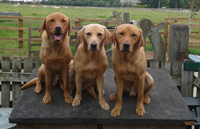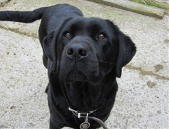Horses & Dogs – what and how we could help…
Animals can suffer back, neck and muscular injuries and problems just as humans do. These problems can cause stiffness, pain, loss of performance or even behavioural changes. As with people post-operative and post-injury physio has been shown to improve the outcome and quality of the healing and help be back to normal quicker…
1. Rehabilitation after an injury or operation –
Veterinary Physiotherapy post-operation or injury (ideally as early as possible!) can help to reduce swelling, improve range of motion of joints. Flexibility and rehabilitation exercise plans can all help recovery rates and quality. Electrotherapies can also be used to help to create optimum conditions for healing for example pulsed magnetic therapy to enhance fracture repair, LASER for wound healing or therapeutic ultrasound for tendon problems. A holistic approach is taken so the rest of the body is addressed.
2. Maintenance & support of ongoing physical problems – for geriatric patients or those with conformation issues –
Animals with ongoing physical problems may compensate for their problem by moving differently. This can cause soreness to build up in other areas which needs to be kept to a minimum to enhance quality of life. By aligning the body and getting the joints moving as well as possible can help keep them more comfortable and result in less stress on the affected joints. Flexibility and strengthening programmes will probably be given to try to address the cause rather than just the symptoms to help long term.
3. Performance checks –
Many animals are required to perform in sports for their owners. This places different physical demands on the musculoskeletal system to that of the animal in the wild – in order to perform to the best of their physical ability and for the greatest ease of movement the body needs to be functioning correctly. For performance animals maintenance and preventative sessions are very beneficial to address any issues before they cause problems to keep your animal physically at its best.

Horses – indications your horse may benefit from a treatment…

Dogs – indications your horse may benefit from a treatment…
Conditions
Tendon & ligament damage
Back problems
Post operative care
Soft tissue injuries e.g. muscle tears – optimise recovery time
After laminitis or after lameness – where secondary compensations and soreness have developed
Nerve damage
Diagnosed lameness or gait irregularities
Chronic conditions e.g. osteoarthritis
Muscle imbalance
Biomechanical compensation
Lameness after a fall/accident where alternative causes have been ruled out by your vet
Swinging leg lameness where cause could be muscular
Range of movement restrictions
Discomfort from previous dental, saddle, foot balance issues
Rider imbalance – and then we will send you to Back Into Action Physiotherapy so that you both are straight!
Sore or cold backed response when underlying conditions have been ruled out
Problems standing for the farrier
Uneven wear of shoes
Reoccurrence of symptoms previously successfully treated by McTimoney/Physiotherapy/Massage
In the absence of any resolution by conventional methods
During box rest – to limit stiffness and muscle atrophy
Ridden
Pre & post competition performance checks and recovery – to retain performance and as preventative treatment
Resenting tacking up
Unusual ridden behavioural problems and resistances, such as napping, rearing, refusing or bucking
Poor transitions – both upwards and downwards
Difficulty with canter leads, or maintaining canter, disunited
Asymmetry – stiffer to one rein more than the other
Inactivity or struggling to engage hindquarters
Loss of impulsion, shorter stride length than normal
Not jumping straight, taking down poles more than normal
Doesn’t feel ‘straight’
Unexplained deterioration in usual performance
Jumping to one side
Soreness caused by saddle slipping
Conditions
Hip and elbow dysplasia
Cruciate ligament injuries
Soft tissue injuries
Fractures ~ optimise fracture repair
After surgery/injury rehabilitation
Neurological conditions ~ eg. disk problems, lumbar stenosis
Osteoarthritis
Lameness and gait abnormalities (once lameness diagnosed) or if sound ‘not quite moving right’
Nerve damage
Biomechanical compensations for underlying problems such as obesity, orthopaedic conditions and breed dispositions
Muscle imbalance – over and under development
General MOT and check ups to prevent problems developing
Dogs in hard work maintenance – working/agility dogs
Reoccurrence of symptoms previously successfully treated by McTimoney/Physiotherapy/Massage
Trauma or fall where alternative causes of pain have been ruled out by the vet
Behaviours
Uncharacteristic changes in behaviour or temperament
Unexplained deterioration in usual performance when underlying orthopaedic conditions have been ruled out
Reluctance to exercise or reduced athletic performance
Dogs who always pull on the lead
Signs of discomfort when stroked on the back
Difficulty jumping in/out of the car
Difficulty up/down stairs
Uncomfortable getting up
Stiffness after exercise

